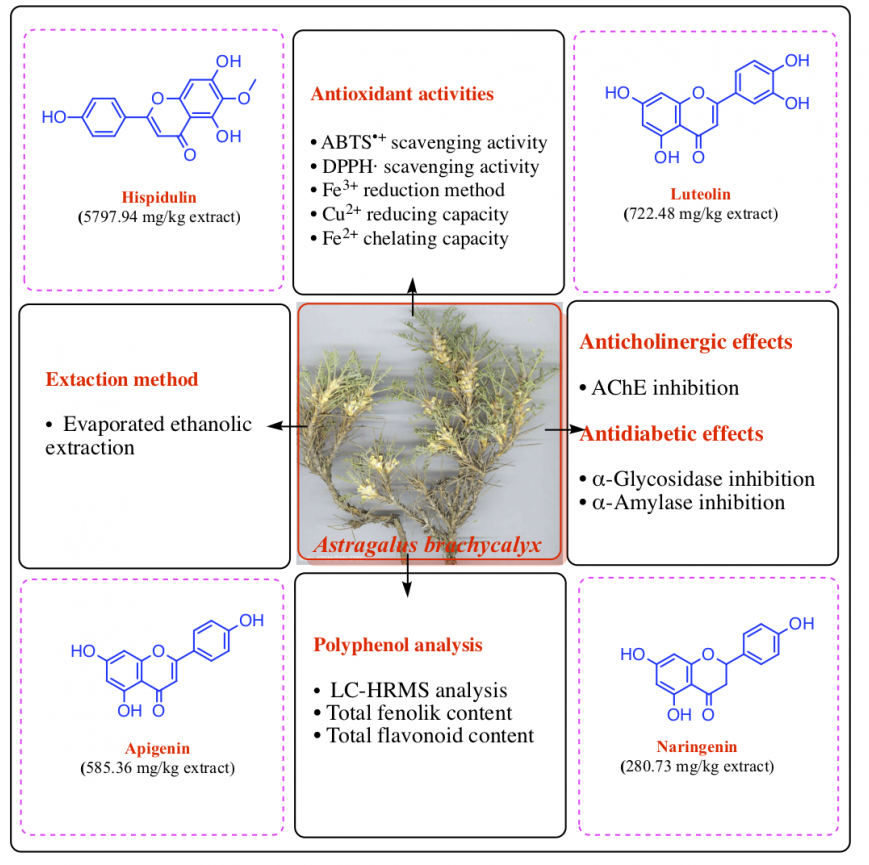JOURNAL 2155
Journal of Chemical Metrology
Year: 2021 Issue: 2 July-December
p.135 - 151
Viewed 2910 times.
GRAPHICAL ABSTRACT

ABSTRACT
Astragalus is a perennial plant that has existed for about 2500-3000 years and consists of more than 250 taxonomic parts. Twenty species of Astragalus are endemic to Turkey, as well as the richest genus with 425 taxa. The roots of Astragalus species are used in folk medicine as hepatoprotective, antioxidant, antibacterial, antihypertensive, antidiabetic and diuretic. Also, it is used to treat diabetes mellitus, leukemia, nephritis and uterine cancer. It is known that in Anatolia, Astragalus roots are traditionally used against leukemia and wound healing. For the purpose, the measuring of antioxidant activity of evaporated ethanol extract of Astragalus brachycalyx FISCHER (EEAB), some bioanalytic methods including DPPH• and ABTS•+ scavenging effects, ferric ions (Fe3+) and cupric ions (Cu2+) reducing abilities, and metal (Fe2+) chelating activity were realized. α-Tocopherol, ascorbic acid, and BHT were used as the standard antioxidants. On the other hand, some phenolic compounds, which responsible for antioxidant activities of EEAB was determined by liquid chromatography-high resolution mass spectrometry (LC-HRMS). At the similar concentration, EEAB exhibited efficient antioxidant effects when compared to standard compounds. Additionally, EEAB showed IC50 values of 1.985 μg/mL toward acetylcholinesterase (AChE), 0.620 μg/mL on α-glycosidase and 0.306 μg/mL against α-amylase enzymes.
KEYWORDS- Astragalus brachycalyx
- phenolic compounds
- antioxidant activity
- acetylcholinesterase
- α-glycosidase
- α-amylase